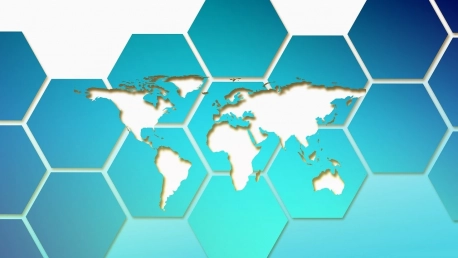The financial landscape is undergoing a transformative shift with Bloxcross and GoDirectPay forging a partnership that has given rise to a cutting-edge mobile payment app. This collaboration marks an era of real-time global transactions and disrupts traditional banking systems. The new app is more than just a technological upgrade; it’s a crucial step toward a financial ecosystem that’s both inclusive and efficient.In essence, the app is redesigning how money moves across the globe. Users can now expect transactions that are fast, seamless, and transparent, addressing the common pain points of cross-border payments. Its design embodies an economic gateway that’s accessible to a broader demographic, thus democratizing the process of international financial exchanges.The implications of this innovation are far-reaching. It promises to streamline complex financial processes, reduce costs related to international transfers, and enhance the user experience through simplicity and speed. The app aims at dissolving barriers, enabling smoother economic interactions, and fostering global connections.This breakthrough by Bloxcross and GoDirectPay is not only pivotal for the finance industry; it could also signal a paradigm shift in how businesses operate and how consumers engage in the global market. As we proceed with cautious optimism, the potential of this app to redefine global finance is evident, setting a new standard for how we view and manage our money in an increasingly connected world.
The Emergence of a New Payment App
The finance sector, much like any other service-oriented domain, is not immune to the demands for evolution. Bloxcross and GoDirectPay, aware of the growing dissatisfaction with conventional banking systems, have found synergy in their strengths to disrupt the existing order. Current banking operations are frequently shackled by lethargic processing speeds and bewildering fee frameworks, prompting the call for an advanced, seamless approach to international financial transactions. The union of Bloxcross’ proficiency in executing swift border-crossing transfers with GoDirectPay’s established electronic payment infrastructure has culminated in an app that doesn’t just promise change—it enacts it. In an unprecedented move, it positions itself at the heart of payment innovations, simplifying what has traditionally been a multi-step, opaque process into a swift, transparent one-click affair. This development is a testament to what the future holds for payment solutions, crafted to suit contemporary needs while shaping the terrain for trends yet to come.
Addressing the Pain Points in Cross-Border Transactions
Acknowledging the challenges faced by entities involved in cross-border transactions is paramount in any attempt to introduce transformative measures. With the Bloxcross and GoDirectPay app, ingenuity is not compromised. It aims to become the panacea for traditional payment woes by offering immediate wire transfers, ACH payments, and the integration of stablecoin transactions, recognizing the varied preferences and requirements of users. Consider the diversity in the transaction volumes it can handle—ranging from small remittances by individuals to massive trade deals by corporations—the app demonstrates unparalleled adaptability and efficiency. This is an ode to the envisioned flexibility in financial undertakings, providing tools that are not just robust but also molded to rectify the common obstacles characteristic of international trade and personal finance alike.
An Innovation Driven by Market Demand
Market trends are prophetic in that they provide a vision of future necessities. The partnership between Bloxcross and GoDirectPay is not an arbitrary maneuver; instead, it’s a strategic response to a clarion call from users worldwide. The PYMNTS and Citi report underpins the acute need for payment systems devoid of the drag and opaqueness that taint traditional mechanisms, championing the push for instantaneous and transparent transactions.This is harmoniously reflected in the steps taken by Thunes and Visa, whose expansion into Asian and African economies via digital financial networks exemplifies the global quest for better payment infrastructures. Such concerted efforts underscore a common objective: to bridge the wide chasm that has long separated existing financial operations from the zenith of efficiency and reliability that modern technology can achieve.
The Role of Cryptocurrency in Future Payments
Cryptocurrency, especially stablecoins, is steadily moving from the outskirts to the center of financial transactions. Platforms like Bloxcross and GoDirectPay are significant players in this shift by incorporating stablecoins as a safeguard against the inherent volatility of digital currencies. This strategic integration signals an acknowledgment of the transformative nature of finance and a willingness to combine traditional and modern monetary methods.Incorporated within the GoDirectPay app, stablecoins offer users a sense of security often absent in the realm of cryptocurrency, paving the way for fluid monetary exchanges free from the constraints of older financial systems. Bloxcross and GoDirectPay are thus positioning themselves at the forefront of a financial evolution, betting on a future where all forms of currency transactions are seamless and progressive. This approach reflects a visionary outlook, recognizing that the ever-changing financial environment is now ready for a harmonious fusion of legacy financial practices with the innovation of digital currencies.
Aligning AI Governance in Federal Agencies
As the financial sector forges ahead with innovations like the payment app, parallel progress is observed in federal institutions, which are increasingly entwining with AI. The directive from the White House asking federal agencies to appoint chief AI officers suggests an earnest commitment to standardized, responsible AI governance. Such a mandate anticipates the transformation AI portends while erecting guardrails to prevent any potential misuse or harmful consequences, establishing a precedent for a structured approach to new technology adoption.This AI governance aims to instill a foundation of safety and civil rights adherence, anticipating the methods by which AI will drive change within these agencies. With the prospect of increased transparency and public awareness of AI systems, the possibility of a more equitable, accountable utilization of artificial intelligence presents itself, suggesting an era of technological responsibility and ethical engagement.
Enhancing End-User Consent and Mitigating Biases
The ethical implementation of AI is as salient as its technical prowess, notably when tackling sensitive applications like facial recognition. Here, policies are crucial in navigating the delicate balance between innovation and individual rights. The TSA’s facial recognition program, coupled with provisions for user opt-out, acts as a blueprint for respectful, bias-conscious technology rollouts, heeding the community’s apprehensions about privacy and discrimination.The emphasis on comprehensive evaluations—both internal and external—of AI systems further attests to a rigorous approach towards minimizing risks associated with their deployment. Independent reviews, especially, offer a lens of objectivity that might be compromised within in-house assessments, advocating for a model of scrutiny that is as stringent as it is impartial. It paves the way for a federally aligned, cohesive set of regulations that could very well shape the conscientious development of AI technologies.









